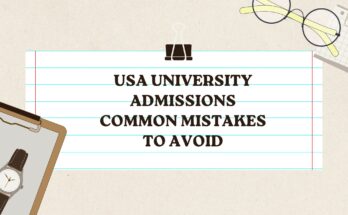Navigating the complex landscape of financial aid and scholarships can be a daunting task for students planning to pursue higher education in the United States. Understanding the various types of financial assistance available, the application processes, and the eligibility criteria is crucial for making informed decisions. This comprehensive guide provides detailed insights into the financial aid and scholarships offered by USA universities, helping students and their families secure the necessary funding for their educational journey.
Understanding Financial Aid
Types of Financial Aid
1. Grants: Grants are a form of financial aid that does not need to be repaid. They are typically awarded based on financial need and are funded by federal and state governments, as well as individual universities.
2. Scholarships: Scholarships are merit-based or need-based awards that do not require repayment. They can be provided by universities, private organizations, or government entities.
3. Loans: Loans must be repaid with interest. They can be federal or private, with federal loans often offering more favorable terms and repayment options.
4. Work-Study Programs: These programs provide part-time jobs for students with financial need, allowing them to earn money to help pay education expenses.
Federal Financial Aid
1. FAFSA: The Free Application for Federal Student Aid (FAFSA) is the primary application for federal financial aid. It determines eligibility for grants, loans, and work-study programs. Students should complete the FAFSA as early as possible to maximize their aid.
2. Pell Grants: Pell Grants are need-based grants for undergraduate students who have not earned a bachelor’s or professional degree. The amount awarded depends on financial need, cost of attendance, and enrollment status.
3. Federal Student Loans: These include Direct Subsidized Loans, Direct Unsubsidized Loans, and PLUS Loans. Subsidized loans are based on financial need, while unsubsidized loans are not. PLUS Loans are available to parents of dependent students and graduate/professional students.
State Financial Aid
Many states offer financial aid programs for residents attending in-state colleges. These can include grants, scholarships, and loan forgiveness programs. Each state has its own application process and eligibility requirements, so students should check with their state’s higher education agency.
Scholarships for USA Universities
University-Specific Scholarships
1. Merit-Based Scholarships: Awarded based on academic achievement, leadership, extracurricular activities, and other criteria. Examples include the Harvard College Scholarship and the Stanford University Scholarship.
2. Need-Based Scholarships: Provided to students who demonstrate financial need. Examples include the Yale University Scholarship and the Princeton University Scholarship.
3. Athletic Scholarships: Offered to student-athletes who demonstrate exceptional skill in sports. Examples include scholarships from NCAA Division I schools.
4. Departmental Scholarships: Awarded by specific departments within a university for students pursuing certain majors or fields of study. Examples include the MIT Department of Engineering Scholarship.
Private Scholarships
1. National Merit Scholarship Program: Recognizes academically talented high school students and provides scholarships through a national competition.
2. Gates Millennium Scholars Program: Offers scholarships to outstanding minority students with significant financial need.
3. Coca-Cola Scholars Program: Awards scholarships to high-achieving high school seniors who demonstrate leadership and community service.
4. Rotary International Scholarships: Provides scholarships for undergraduate and graduate students based on academic achievement and community service.
International Student Scholarships
1. Fulbright Foreign Student Program: Offers scholarships to international students for graduate study or research in the USA.
2. Hubert H. Humphrey Fellowship Program: Provides professional development opportunities for experienced professionals from designated countries.
3. AAUW International Fellowships: Awards fellowships to women who are not U.S. citizens or permanent residents for full-time graduate or postgraduate study.
4. Joint Japan/World Bank Graduate Scholarship Program: Provides scholarships to students from World Bank member countries to pursue development-related studies.
Applying for Financial Aid and Scholarships
Preparation and Research
1. Start Early: Begin researching financial aid and scholarship opportunities at least a year before you plan to start university. Many applications have early deadlines.
2. Gather Documentation: Collect necessary documents, such as tax returns, bank statements, and academic transcripts, to support your applications.
3. Create a Calendar: Keep track of application deadlines and submission requirements to ensure you do not miss any opportunities.
Application Process
1. Complete the FAFSA: Submit the FAFSA to determine your eligibility for federal financial aid. Some universities also use the FAFSA to award institutional aid.
2. Apply for State Aid: Check your state’s financial aid website for application details and deadlines.
3. University Applications: Many universities have their own financial aid forms in addition to the FAFSA. Ensure you complete these forms accurately and on time.
4. Private Scholarships: Research and apply for scholarships from private organizations. Tailor your applications to meet the specific requirements of each scholarship.
Tips for Success
1. Write Strong Essays: Many scholarship applications require essays. Take the time to craft thoughtful, well-written essays that highlight your achievements, goals, and financial need.
2. Obtain Strong Recommendations: Letters of recommendation can significantly impact your applications. Choose recommenders who know you well and can speak to your strengths and potential.
3. Follow Up: After submitting your applications, follow up to ensure they were received and are complete. This can help prevent any administrative errors that might disqualify you.
Conclusion
Securing financial aid and scholarships is essential for many students to afford a university education in the USA. By understanding the types of financial aid available, researching scholarships, and carefully preparing your applications, you can increase your chances of receiving the necessary funding. With persistence and careful planning, you can navigate the financial aid landscape and achieve your academic and career goals.



